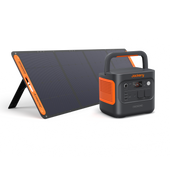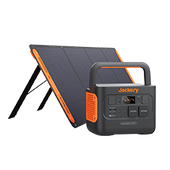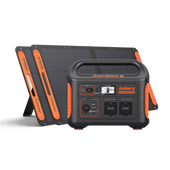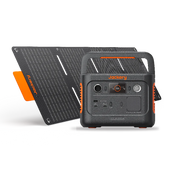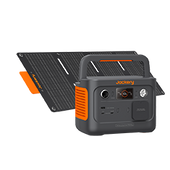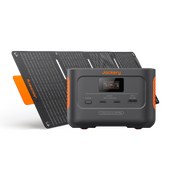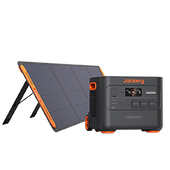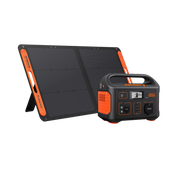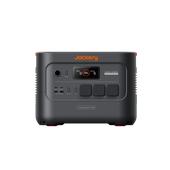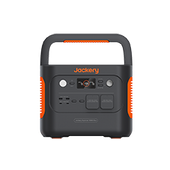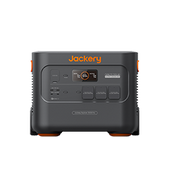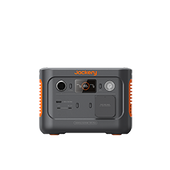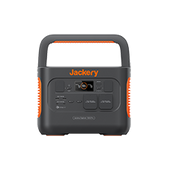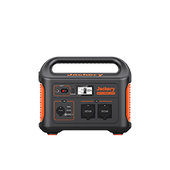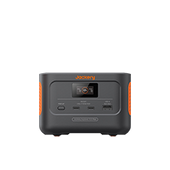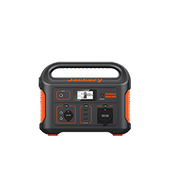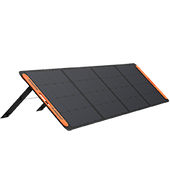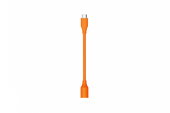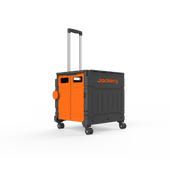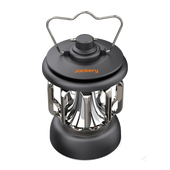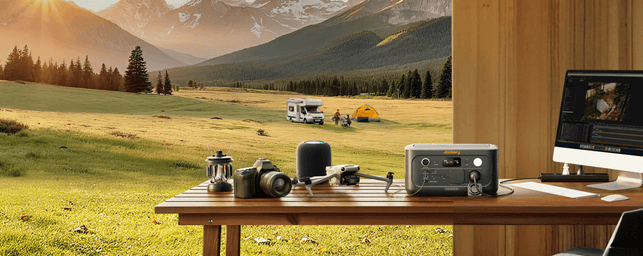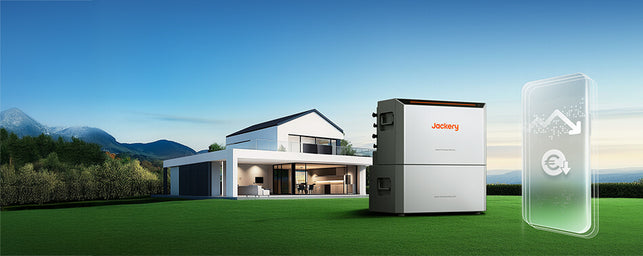Wild camping, the practice of setting up a tent or camper outside designated campsites, appeals to those seeking freedom, nature, and adventure. However, the big question many travelers ask is: Is wild camping allowed in Europe?
The answer isn't straightforward; rules vary widely from country to country, with some offering lenient policies while others enforce strict restrictions.
In this article, we will provide a clear country-by-country breakdown to help you plan responsibly. Whether you are pitching a tent in the mountains or traveling in a camper powered by a solar power station, knowing the legalities is essential.
So, pack your power solar generator and set off on a camping adventure across Europe, armed with the knowledge you need to explore each region with confidence.
Is Wild Camping Allowed in Europe?
Camping laws are complex and vary a lot even within countries, so always check local rules if you plan to explore wild camping locations. Here is a detailed breakdown of wild camping in Europe, region by region.
1. Wild Camping in Northern Europe
Northern Europe is among the most wild-camping-friendly parts of the continent.
- Scandinavia (Norway, Sweden, Finland, etc.): These countries have "right to roam" laws. For example, in Norway, wild camping is allowed on uncultivated land, provided you stay at least ~150 m away from houses or cabins and don't remain more than 2 nights at the same spot. Sweden similarly allows wild camping under allemansrätten.
- Baltic States (Estonia, Latvia, Lithuania): Wild camping is generally allowed in many forested and rural areas, though there are restrictions in protected areas, and you must follow rules about litter, fire, etc.
- Scotland (UK): There is a legal tradition of wild camping under certain conditions (e.g., leave no trace, avoid proximity to homes/roads, obey outdoor access codes). The 2025 Dartmoor National Park case reaffirmed some wild camping rights for the general public by confirming that wild camping falls under the "open-air recreation" provision of the previous act.
Typical wild camping places: Forests, uncultivated land, hiking trails, remote lakeshores, and rural beaches (outside protected zones). People often pick spots away from private property or roads.
2. Wild Camping in Western Europe
Western Europe is more restrictive, but rules vary heavily.
- France: Wild camping is tolerated ("bivouac") in remote areas, especially above the tree line, but prohibited in many national parks, beaches, near historical monuments, etc. Permission from landowners/local authorities may be needed in some places.
- Germany: In general, wild camping is illegal. Tent camping in the wild is prohibited, although emergency bivouac (for just one night without a tent in some remote spots) may be tolerated. Motorhomes often have separate rules: parking for rest rather than full "camping behavior.
- Portugal & Spain: Mostly prohibited or strictly regulated. In Portugal, overnight stays may be permitted under certain conditions (excluding protected areas and limited to 48 hours in some municipalities), but setting up a full wild camping setup (including a tent, awning, etc.) is often prohibited. Spain varies by region: some rural areas are more tolerant, but national parks, beaches, and coastal zones often strictly ban wild camping.
Wild camping locations in Western Europe are thus often limited to remote rural hills, mountains (if permitted), informal bivouac only, or above the tree line, or private land (with permission).
3. Wild Camping in Central Europe
This region is generally the least permissive, with very limited legal wild camping places.
- Austria: Wild camping is broadly prohibited. Setting up a tent in forests, protected areas, or private land without permission is illegal. Bivouacking (sleeping without a tent) might be tolerated in remote, high mountain areas.
- Czech Republic: Similar to Austria, wild camping is not legal in the strict sense. A "planned bivouac"—one night without erecting full tent structures, in remote non-protected areas—may be tolerated.
- Switzerland / Germany: Switzerland has cantonal/local rules; many places prohibit wild camping, although discreet overnight stays and parking in certain areas may be permitted. Germany, as you have already read above, largely restricts wild camping.
Wild camping in Central Europe typically involves using huts, shelters, or staying in campsites, or engaging in "light" bivouacing rather than full wild camping. There are very few legal places for wild camping.
4. Wild Camping in Southern Europe
Southern Europe has many beautiful wild camping places, but laws tend to be quite restrictive or inconsistent.
- Italy: Wild camping is mostly prohibited. Some high-altitude zones may tolerate bivouac; remote spots might be ok if discreet. Fines are common, especially on coasts or in tourist areas.
- Greece: Recently, it has become more restrictive. Officially, wild camping is forbidden under new laws (e.g., Law 5170/2025). Beaches, public areas, or archaeological sites are particularly regulated. However, remote islands or less-visited beaches are often used by wild campers (but at risk).
- Spain / Portugal (see Western Europe): In the southern parts of these countries, the rules are often stricter due to high tourism, dense population, and protected coastal zones. Campsites and designated areas are safer choices.
Wild camping places in Southern Europe often include remote mountain trails, less-traveled islands, and remote inland forests, but always check whether you are in a national park or protected area.
5. Wild Camping in Eastern Europe
Eastern Europe offers more flexibility, although it comes with regional and local limitations.
- Romania, Poland, Slovakia, and others: Many of these countries are more tolerant of wild camping, especially outside protected areas. In Romania, wild camping is widely tolerated outside of nature reserves, while in Poland, there are designated forest areas for camping.
- Balkans (Serbia, Montenegro, etc.): In some places, wild camping is technically prohibited but often tolerated if done discreetly, especially in remote areas off the beaten track and outside tourist hotspots.
- Turkey (if included in Eastern Europe): Legal, with few restrictions in many areas, and respecting local laws/customs is essential.
Wild camping locations in Eastern Europe often feature expansive rural forests, mountain ranges, less populated valleys, remote border areas, and occasionally, coastal zones.
In Addition to Wild Camping, What Other Camping Types Can You Try?
Below are three excellent alternatives to wild camping—each offers a unique blend of comfort, convenience, and connection to nature.
1. Traditional Tent Camping at Campsite
Instead of searching for wild camping places, you can pitch your tent at managed campsites. They offer toilets, showers, and electricity—perfect for families and beginners. Campsites across Europe sit near beautiful wild camping locations, so you get comfort without breaking rules.
Many also provide cooking areas and kids' play zones, making them family-friendly. But don't forget to book in advance during peak season to avoid stress and guarantee your spot.
2. Glamping
Glamping combines the outdoors with comfort—furnished tents, yurts, or pods with real beds and amenities. Many sites are set in stunning wild camping locations, giving the feel of wild camping without the hassle. It is ideal for couples or those who prefer style over roughing it.
It is also a great option if you want a mix of adventure and luxury amenities, such as hot tubs or Wi-Fi. Perfect for a weekend getaway without needing to buy or carry gear.
3. RV and Campervan Camping
With a campervan or RV, your bed and wheels travel together. You can move freely, cook on board, and stop near popular wild camping locations. While wild camping in Europe, laws limit where you can park overnight; designated camper stops and campsites make this style flexible and adventurous.
Apps and maps can help you find legal overnight stops across Europe, while solar panels or a portable power station can keep your van and electrical essentials powered off-grid.
Essential Camping Etiquette: The "Leave No Trace"
When enjoying camping, respecting nature and fellow adventurers is just as important as finding the perfect spot. The "Leave No Trace" principles provide simple but powerful guidelines to protect wild camping locations and ensure future campers can enjoy them too.
1. Plan Ahead and Prepare
Before you set out for wild camping, research the area's rules, weather, and terrain. Knowing whether wild camping is allowed helps avoid fines and conflicts. Preparation also means carrying enough supplies, maps, and gear so you don't damage nature in search of resources.
2. Travel and Camp on Durable Surfaces
Stick to trails, rocky ground, or already-used wild camping places to avoid harming fragile ecosystems. When wild camping in Europe, be aware that many alpine meadows, dunes, or wetlands are sensitive—camping there can cause long-lasting damage.
3. Dispose of Waste Properly
Carry out all trash, leftover food, and toilet waste. In wild camping, leaving rubbish behind not only spoils the view but can also attract animals and harm the environment. Always bring bags or portable waste solutions.
4. Leave What You Find
Don't pick flowers, carve trees, or take stones from wild camping locations. Preserving the natural environment ensures every visitor experiences the same untouched beauty of wild camping in Europe. Respect nature so it remains wild and authentic.
5. Minimize Campfire Impacts
Use a camping stove instead of open fires when possible. In wild camping, fires can scar the land, use up deadwood, or even spark wildfires. If fires are allowed, keep them small and in established rings. Always fully extinguish fires before leaving your campsite.
6. Respect Wildlife
Wild camping puts you closer to animals—but keep your distance. Don't feed them, store food securely, and observe quietly. Respecting wildlife keeps both you and the animals safe. Use binoculars for a closer look instead of approaching.
7. Be Considerate of Other Visitors and Landowners
Not everyone loves the idea of wild camping near their land or trails. Keep noise low, respect private property, and yield to other hikers. In popular spots for wild camping in Europe, courtesy makes everyone's experience better. Seek permission when unsure about camping on private land.
Let Jackery Power Each Camping Journey!
Jackery is a brand known for high-quality, portable solar generators and power stations built for travelers, outdoor enthusiasts, and people who need reliable off-grid power. For those heading out to remote wild camping places, we offer power solutions that combine capacity, durability, and cleaner energy, so you don't have to compromise comfort or safety when you leave the beaten track.
1. Jackery Solar Generator 1000 v2
This model delivers approximately 1070 Wh of capacity with a 1500W output, utilizing a LiFePO₄ battery that promises thousands of charge cycles.

How it helps for wild camping:
- With that capacity and power output, you can run essentials like camp lights, a portable fridge/cooler, phone or camera gear, and even cookers or small appliances, depending on wattage, all while camped in a wilderness spot without main power.
- Faster charging options mean you can replenish the generator via solar panels, AC, or even a car, which is useful for wild camping in many European countries where sunshine isn't guaranteed all day.
- Its power station is 18% smaller than the older model (Jackery Explorer 1000 Pro Portable Power Station), making it easier to carry to wild camping locations deep in nature, where roads or trails might be rough.
2. Jackery Solar Generator 2000 v2
The Jackery Solar Generator 2000 v2 is a more powerful option, offering approximately 2042 Wh of capacity and a 2200W output for powering larger devices and longer wilderness camping stays. This provides you with more headroom to power larger or multiple devices simultaneously.

How it benefits wild camping:
- Great for longer stays in remote, wild camping areas, or when traveling in a van, camper, or group gear setup. You will have enough power for lighting, cooking setups, heaters, and maybe even some small appliances.
- Bigger capacity means more autonomy: you can go longer between charges, which is valuable when wild camping in remote regions where grid access or even sunlight might be intermittent.
- Because the output is higher, you gain flexibility: charging multiple devices, running higher-wattage gear, and possibly supporting more comfort ("glamping lite") in wild camping spots without sacrificing freedom.
Concluding Thoughts
Wild camping in Europe is an adventure that offers freedom and closeness to nature, but it comes with different rules depending on the country and region. While Northern Europe embraces wild camping with its right-to-roam traditions, Central and Southern Europe tend to have stricter regulations. Western and Eastern regions fall somewhere in between, with mixed rules and local exceptions.
No matter where you go, respecting the "Leave No Trace" principles is essential to keep wild camping places pristine. With good planning, awareness of local laws, and the right gear, such as a Jackery solar power station, wild camping in Europe can be an unforgettable experience.
References:
1. https://www.europaexpress.news/wild-camping-adventures-in-europe-penalties-and-regulations-for-2024-and-it-will-cost-a-fortune/
2. https://www.bbc.com/news/articles/c24995gjdy0o
3. https://www.caravanya.com/en/wildcamping-in-europe/
4. https://hiking-trails.com/blog/a-guide-to-wild-camping-in-europe/

